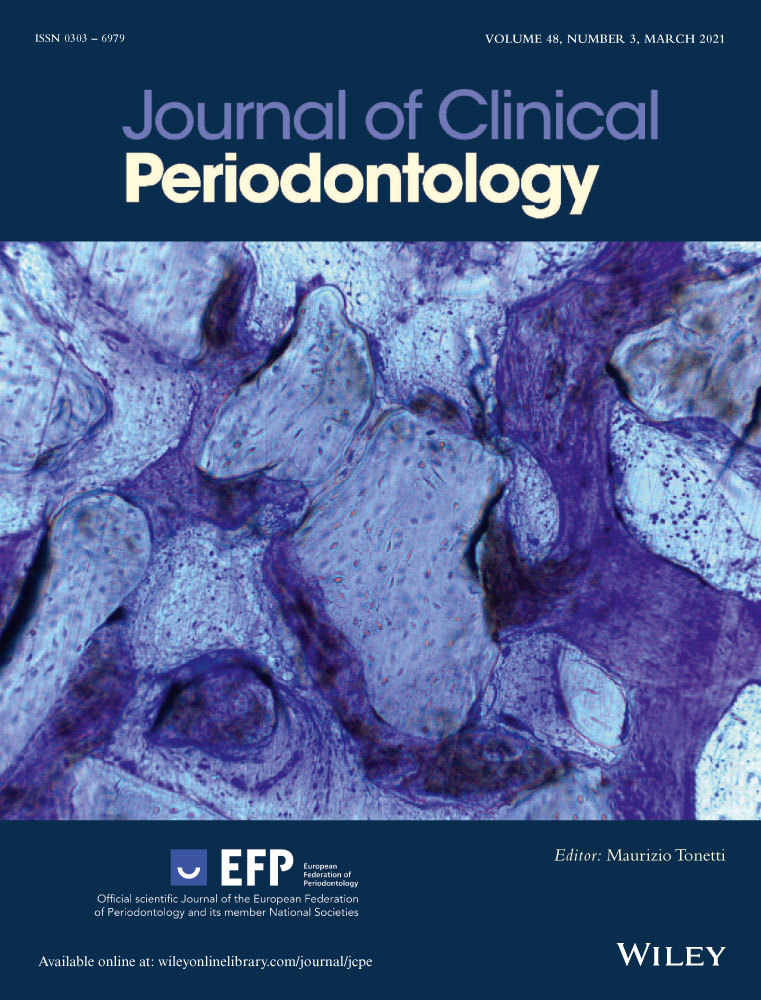Prevalence and risk/protective indicators of buccal soft tissue dehiscence around dental implants
Ignacio Pedrinaci and Cristina Lima are Equally contributed.
Funding information
This study was partially funded by the Osteology Foundation through a Young Research Grant to Dr. Mario Romandini (project n. 15-251).
Abstract
Aim
To evaluate the prevalence of buccal peri-implant soft tissue dehiscence (PISTD) in anterior implants and to identify the risk/protective indicators of PISTD in implants not suffering peri-implantitis.
Materials and methods
240 randomly selected patients from a university clinic database were invited to participate in the present cross-sectional study. Those who accepted, after the evaluation of their medical and dental records, were clinically examined to assess the prevalence of buccal PISTD in non-molar implants. Multilevel multivariate logistic regression analyses were then carried out to identify those factors associated either positively (risk) or negatively (protective) with buccal PISTD in implants without peri-implantitis.
Results
92 patients with a total of 272 dental implants were analysed. At implant-level, the prevalence of buccal PISTD was 16.9%, while when selecting only implants without peri-implantitis it was 12.0%. Buccal PISTD was present in 26.7% of the implants diagnosed with peri-implantitis. The following factors were identified as risk/protective indicators of buccal PISTD in implants without peri-implantitis: malposition (too buccal vs. correct: OR=14.67), thin peri-implant phenotype (OR=8.31), presence of at least one adjacent tooth (OR=0.08) and presence of abutment (OR=0.12).
Conclusions
PISTD are highly prevalent among patients with dental implants in this university-based population, and several factors were identified as risk and protective indicators of PISTD in implants not suffering peri-implantitis.
CONFLICT OF INTEREST
The authors declare no conflicts of interest related to this study.
Open Research
DATA AVAILABILITY STATEMENT
The data that support the findings of this study are available from the corresponding author upon reasonable request.




